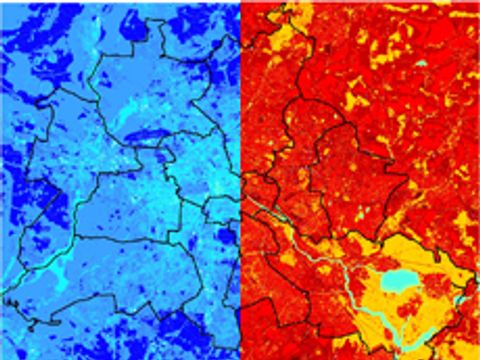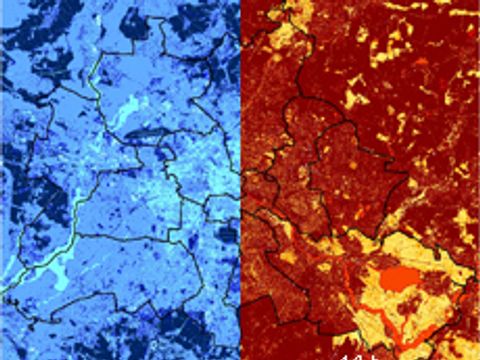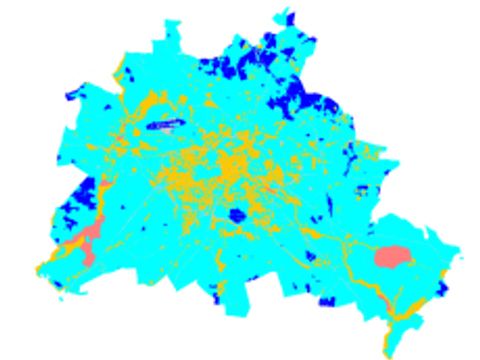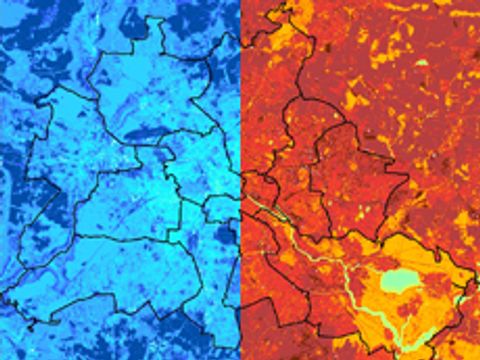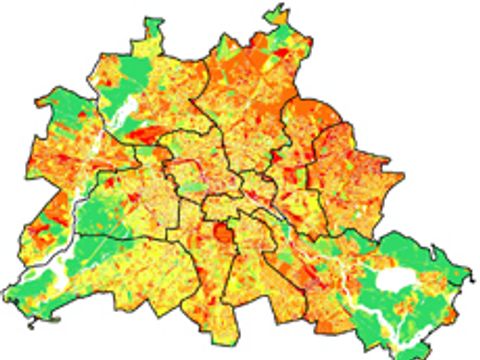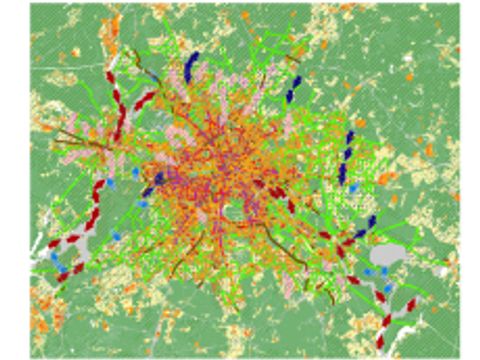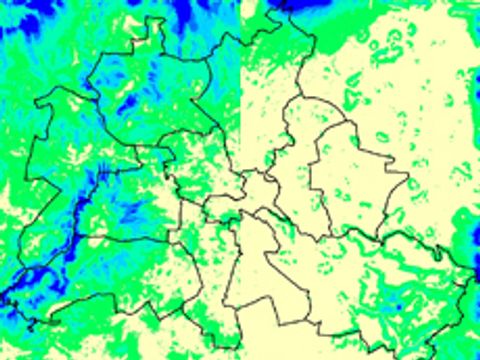
Image: Umweltatlas Berlin
04.10.01 Near Ground Wind Field and Cold Air Volume Flow (10:00 p.m. and 04:00 a.m.)
A good ventilation of settlement areas may lead to a decrease in the thermal burden. In Berlin, air flows directed from inner-city green spaces into built-up areas are immensely important. With the help of high-resolution wind arrows and cold air volume numbers, this map presents the local potential to ventilate built-up areas for the specified time. 04.10.01 Near Ground Wind Field and Cold Air Volume Flow (10:00 p.m. and 04:00 a.m.)

